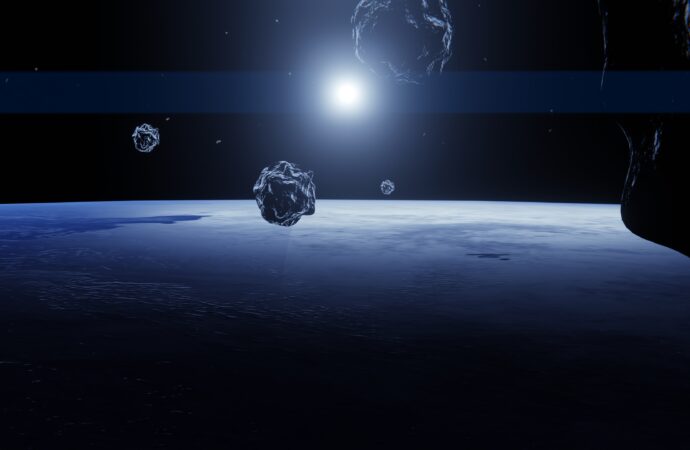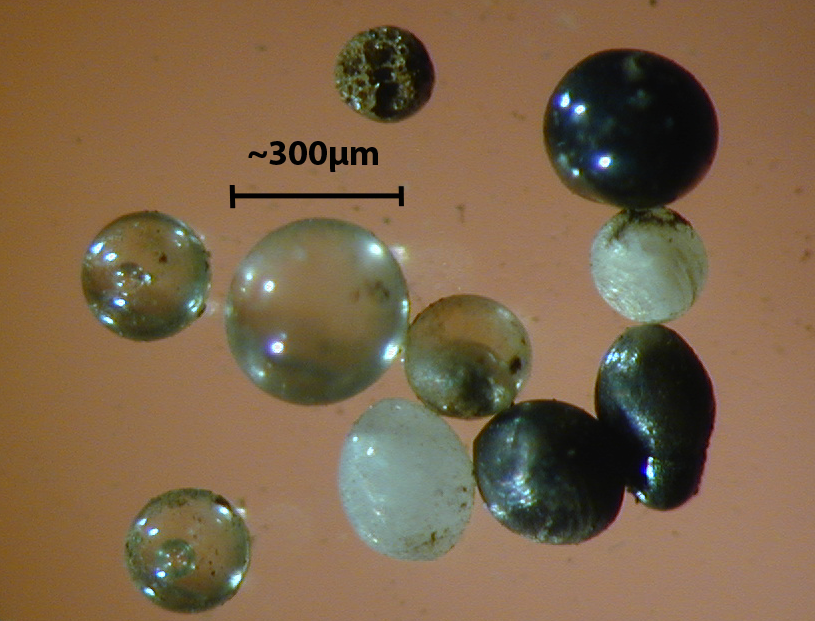Some of the dust ending up in your vacuum cleaner is extraterrestrial. Astronomers call them micrometeorites, alien rocks as small as pollen grains. But don’t be fooled by their tininess: they make up most foreign material arriving on our planet.
Scientists have been collecting evidence of landing micrometeorites since 1891 in the deep-sea floor, deserts, and polar ice caps.
Where do they come from? Astronomers estimate many of them are tiny comets influenced by Jupiter’s gravity; others come from the asteroids belt. They travel in space at insane velocities: up to 72 kilometers per second, more than 80 times the speed of a rifle bullet. And yes, micrometeorites threaten satellites and space stations.
In a study recently published in Earth and Planetary Science Letters, the authors reported that about 15000 tons of micrometeorites per year enter our atmosphere. A handful of them are completely destroyed by the harsh atmospheric entry never reaching the ground. Still, some do survive accumulating in our living rooms. Many micrometeorites melt turning into beautiful tiny spheres, others lose material to erosion but do not melt.
The survival and features of the cosmic dust deposited on the Earth’s surface depend on their size, composition, entry angle, and velocity. Those avoiding the heat from the atmospheric journey spend quality time surfing air currents before landing.

Tons of cosmic dust arrive on the Earth’s surface every year
The scientist of the study collected and investigated large quantities of ultra-clean snow — for over two decades—in Concordia Station, Antarctica. According to their calculations, the global mass of extraterrestrial micro rocks reaching the ground is about 5200 tons per year.
They argued that their surveyed material from the vicinity of the Italian-french research facility produces reliable results. Other locations, reported in previous studies, do not offer the conditions to collect tiny unmelted particles, which are very fragile.
Julien Rojas, Université Paris-Saclay, coauthor of the scientific article, offers more insight:
“Variations between the flux measured in distinct blue ice field locations may be explained by differences in snow accumulation rate and erosion leading to uncertainties. The exceptional cleanliness of the snow allows fragile particles to recover with high efficiency.“
And continues with enthusiasm:
“Our collection protocol allows us to get unprecedented control over the collected surface, thanks to the low snow accumulation rate, and the counting statistics of the micrometeorites, especially the unmelted ones. The very careful collection process made possible the preservation of the fragile unmelted micrometeorite population. Our work thus provides a reference value of the incoming flux of interplanetary dust on Earth.”

Carbon, the element of life, abounds in extraterrestrial dust
The arrival of foreign material has influenced our planet’s life and geology. Meteorites are a hot topic on the origin of life. For this reason, chemists search for carbon molecules in micrometeorites that could have fostered biogenesis.
Rojas and collaborators reported an estimate of 20 to 100 tons per year of carbon-containing compounds in micrometeorites reaching the ground, probably coming from comets.
We are connected to the cosmos in many ways. When staring at the glittering dust in a ray of light, think about the fantastic interplanetary journey some of them may have endured.
References
- J. Rojas, J. Duprat, C. Engrand, E. Dartois, L. Delauche, M. Godard, M. Gounelle, J.D. Carrillo-Sánchez, P. Pokorný, J.M.C. Plane, (2021). The micrometeorite flux at Dome C (Antarctica), monitoring the accretion of extraterrestrial dust on Earth. Earth and Planetary Science Letters 560, 16794. ISSN 0012-821X.
- John M. C. Plane. (2012). Cosmic dust in the earth’s atmosphere. Chemical Society Reviews 41, 6507–6518.
- Toru Yada, Tomoki Nakamura, Nobuo Takaoka, Takaaki Noguchi, Kentaro Terada, Hajime Yano, Takakiyo Nakazawa, and Hideyasu Kojima. (2004). The global accretion rate of extraterrestrial materials in the last glacial period estimated from the abundance of micrometeorites in Antarctic glacier ice. Earth Planets Space 56, 67–79.
Scientists interviewed
Julien Rojas, the main author of the article The micrometeorite flux at Dome C (Antarctica), monitoring the accretion of extraterrestrial dust on Earth, Ph.D. student in cosmochemistry, IJCLab/Université Paris-Saclay.




